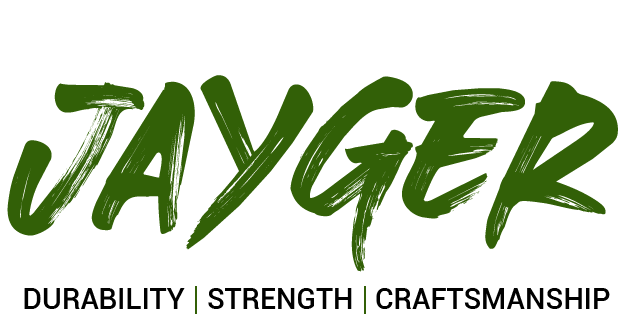A good meat cleaver knife is essential for any serious home cook or professional chef. But with so many options available, choosing the right one can be challenging. Once you’ve found the perfect cleaver, you must know how to use and maintain it properly to ensure it lasts for years. Here are some tips and tricks for using and caring for your custom meat cleaver.
Understanding the Anatomy of a Meat Cleaver
Before you can master the art of using a meat cleaver for precision cuts, it’s essential to understand the anatomy of the knife and tools. A meat cleaver typically consists of a heavy, rectangular blade designed to chop through bones and tough cuts of meat. The blade is attached to a wood, plastic, or metal handle. Some meat cleavers also have a bolster, which is a thick piece of metal that sits between the blade and the handle to provide balance and support. By understanding the different parts of a meat cleaver, you’ll be better equipped to choose the right meat cleaver for your needs and use it effectively.
Mastering Grip and Control for Precise Cuts
Grip and control are essential when using a meat cleaver for precision cuts. Start by holding the handle firmly with your dominant hand, ensuring your fingers are wrapped around the handle and your thumb rests on the top. Next, use your other hand to guide the meat and keep it steady. Then, when cutting, use a rocking motion with the blade, holding the tip of the cleaver on the cutting board and lifting the handle up and down. With practice, you’ll be able to achieve precise cuts with ease.
Essential Techniques for Chopping, Slicing, and Dicing
Using a meat cleaver for precision cuts requires mastering essential chopping, slicing, and dicing techniques. When chopping, use the weight of the chopper to your advantage by lifting it high and bringing it down with force. For slicing, use a smooth, gliding motion with the blade, keeping it at a slight angle to the meat. And for dicing, combine chopping and slicing motions to create even, uniform pieces. With these techniques, you can confidently tackle any meat cutting task.
Practice Precision Cuts
It’s essential to have a steady hand and a sharp blade to achieve precision cuts with a meat cleaver. Start by selecting the proper size cleaver for the job – a giant cleaver is better for more significant cuts of meat, while a smaller one is ideal for more delicate work. Next, hold the handle firmly with your dominant hand and use your other hand to guide the blade. Finally, keep your fingers out of the way and use a slow, steady motion to cut. With practice, you’ll be able to make perfect cuts every time.
Tips for Achieving Consistent and Even Thickness
Achieving consistent thickness when using a meat cleaver ensures even cooking and presentation. One tip is to use a ruler or measuring tape to mark the desired consistency of the meat before cutting. Another is to use a rocking motion with the cleaver, keeping the blade at a consistent angle and using the weight of the chopper to create even cuts. Practice makes perfect, so experiment and try different techniques to find what works best.
Exploring Advanced Cutting Methods with a Meat Cleaver
Once you have mastered using a meat cleaver for precision cuts, it’s time to explore more advanced cutting methods. One technique is the “bias cut,” which involves cutting the meat at a 45-degree angle to create larger, more tender slices. Another is the “julienne cut,” which involves cutting the beef into thin, matchstick-like strips. These advanced cutting methods require more skill and practice but can elevate your meat-cutting game to the next level.
Use the Weight of the Cleaver to Your Advantage
When using a meat cleaver, it’s important to remember that the weight of the custom knife can work in your favour. Instead of using brute force to chop through meat, let the importance of the cleaver do the work for you. Start by positioning the blade where you want to cut, then gently rocking to guide the edge through the meat. This will help you make clean, precise cuts without putting too much strain on your hands or wrists.
Kiritsuke Knife vs Meat Cleaver
While the kiritsuke knife and meat cleaver are essential tools in the kitchen, they serve different purposes. The Kiritsuke knife is a versatile tool that can handle various cutting tasks, including slicing, dicing, and chopping. Japanese cuisine often uses it to prepare sashimi, sushi, and other dishes. On the other hand, the meat cleaver is designed specifically for chopping through bones and tough cuts of meat. It’s a heavier and more durable tool that can handle the rigours of butchering and preparing meat.
Essential Tips for Maintenance
Essential tips for maintenance to keep your Kiritsuke knife and meat cleaver in top condition, it’s important to follow these basic maintenance tips.
First, always hand wash and dry your knives immediately after use to prevent rust and damage. Second, sharpen your knives regularly using a sharpening stone or honing rod to maintain their sharpness.
Third, store your knives in a sheath or magnetic strip to protect the blades and prevent accidents.
Finally, avoid using knives on hard surfaces like glass or ceramic, as this can damage the blade.
Following these tips ensures that your Kiritsuke knife and meat cleaver remain in excellent condition for years.
